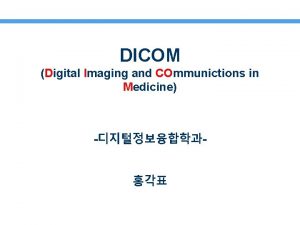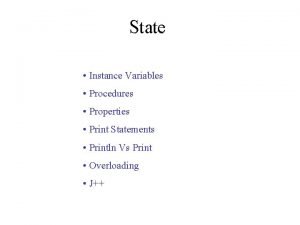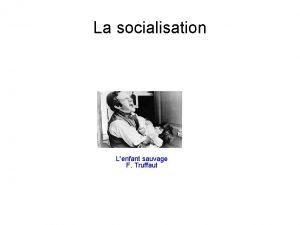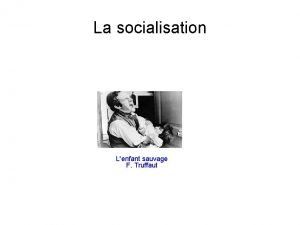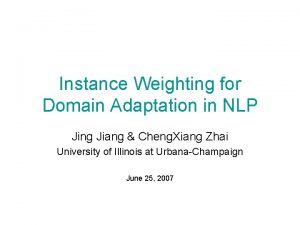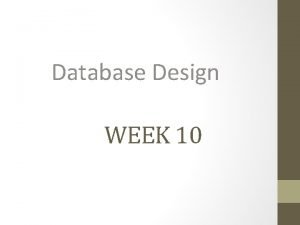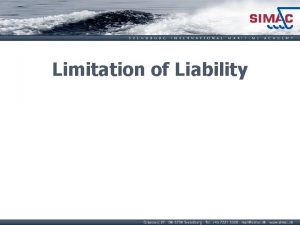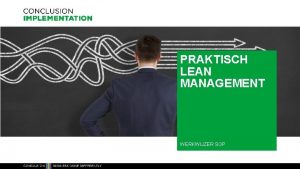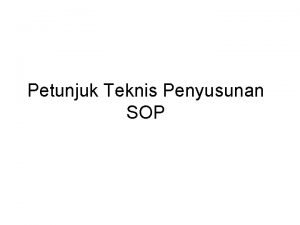Limitation of WADO One SOP Instance only in








- Slides: 8

Limitation of WADO • One SOP Instance only in one call (no way for retrieving all the series/study) • Suited for Web Browser based solution, less for direct with applications • The URL based query is easy to write, but not adapted for being parsed • No easy way to help the application development through WSDL WS-DICOM t-con 2008 -07 -07 emmanuel. cordonnier@etiam. com 1

Web Services… why now? • The WS are now “maturing” • The deployment beyond web server to web server is emerging (application to appli. ) • The WS-I Profiles are defining a real interoperable solution, including (more or less!) the security and reliability aspects • The MTOM mechanism for conveying binary content is now supported by development platforms (. Net, Java…) WS-DICOM t-con 2008 -07 -07 emmanuel. cordonnier@etiam. com 2

Web Services for Dummies • Submitting a form to a Web Server, you are using http POST based structured message, containing the « input fields » • It may also contain files to be uploaded • WS are using such mechanism for the request and the response, and define the structure of message in XML SOAP • A WSDL (XML) file defines the syntax of the communication (request and response) WS-DICOM t-con 2008 -07 -07 emmanuel. cordonnier@etiam. com 3

MTOM for Dummies Date: Thu, 09 Sep 2004 18: 47: 52 GMT Server: Apache/2. 0. 48 (Win 32) mod_ssl/2. 0. 48 Open. SSL/0. 9. 7 d Keep-Alive: timeout=15, max=100 Connection: Keep-Alive Transfer-Encoding: chunked Content-Type: Multipart/Related; boundary=MIME_Boundary; type=application/xop+xml; charset=UTF-8; startinfo="application/soap+xml" --MIME_Boundary Content-ID: <mymainpart@crf. canon. fr> Content-Type: application/xop+xml; charset=UTF-8; type="application/soap+xml" Content-Transfer-Encoding: binary <soap: Envelope xmlns: soap="http: //www. w 3. org/2003/05/soap-envelope" xmlns: xmlmime="http: //www. w 3. org/2004/06/xmlmime" xmlns: xop="http: //www. w 3. org/2004/08/xop/include"><soap: Header></soap: Header> <soap: Body><ns 1: Echo. Test xmlns: ns 1="http: //example. org/mtom/data"><ns 1: Data xmlmime: content. Type="image/jpeg"> <xop: Include href="cid: thismessage: /resource 0. jpeg"></xop: Include></ns 1: Data><ns 1: Data xmlmime: content. Type="image/jpeg"> <xop: Include href="cid: thismessage: /resource 1. jpeg"></xop: Include></ns 1: Data><ns 1: Data xmlmime: content. Type="image/jpeg"> <xop: Include href="cid: thismessage: /resource 2. jpeg"></xop: Include></ns 1: Data></ns 1: Echo. Test></soap: Body></soap: Envelope> --MIME_Boundary Content-ID: <thismessage: /resource 0. jpeg> Content-Type: image/jpeg Content-Transfer-Encoding: binary ÿØÿà�JFIF����, � (IMAGE 1 in BINARY) --MIME_Boundary Content-ID: <thismessage: /resource 1. jpeg> Content-Type: image/jpeg Content-Transfer-Encoding: binary ÿØÿà�JFIF����ÿÛ --MIME_Boundary-- (IMAGE 2 WS-DICOM t-con 2008 -07 -07 in BINARY) emmanuel. cordonnier@etiam. com 4

WADO in WS, which form? • IHE ITI wrote White Paper on WS implementation, based on WS-I • The XDS. b Retrieve Document Set transaction is similar to WS/WADO • All the WADO query parameters can be directly transposed « as is » in WS • The response structure can be derived from the Retrieve Document Set structure 5 WS-DICOM t-con 2008 -07 -07 emmanuel. cordonnier@etiam. com

WADO « brothers » • WADO implies to have the reference • A notification mechanism may be developed on WS (NADO) • A Query by IDs mechanism may enable an application to obtain the reference (QIDO) WS-DICOM t-con 2008 -07 -07 emmanuel. cordonnier@etiam. com 6

NADO Notification of Availability of DICOM Objects • WADO is supposing the Application retrieving the DICOM Object(s) is aware of it/their existence and availability. But no mechanism has been provided for informing the application that such DICOM Instance(s) are available. • Similarly to the DICOM IAN (Instance Availability Notification), a WS based transaction may be defined for notifying the availability of DICOM Object(s). It addresses similar use cases than some targeted by the ISO TC 215/WG 2 “WARM” work item and it may correspond to an evolution of this one. • The mechanism may imply a “subscription” by an application to be notified at different levels (study/series/instance) and the notification message may include, in addition to UIDS, at least the Patient Id, the Accession Number and the Modality. • The Application may be implementing a WS server (so the DICOM system will act as a client to notify it) or as a WS client (so it has to query regularly or use the asynchronous mode of WS). WS-DICOM t-con 2008 -07 -07 emmanuel. cordonnier@etiam. com 7

QIDO Query based on ID for DICOM Objects • Similarly to the IHE ITI Retrieve Document for Display (RID) transaction, the Application can query the DICOM server to have a list of available DICOM objects. • Parameters may be similar to those used for RID (Patient ID, date(s) and number of most recent) with the Accession Number (in addition to the Patient ID required for security reasons). • The Application will act as a WS client, while the DICOM Server will act as a WS server. WS-DICOM t-con 2008 -07 -07 emmanuel. cordonnier@etiam. com 8
